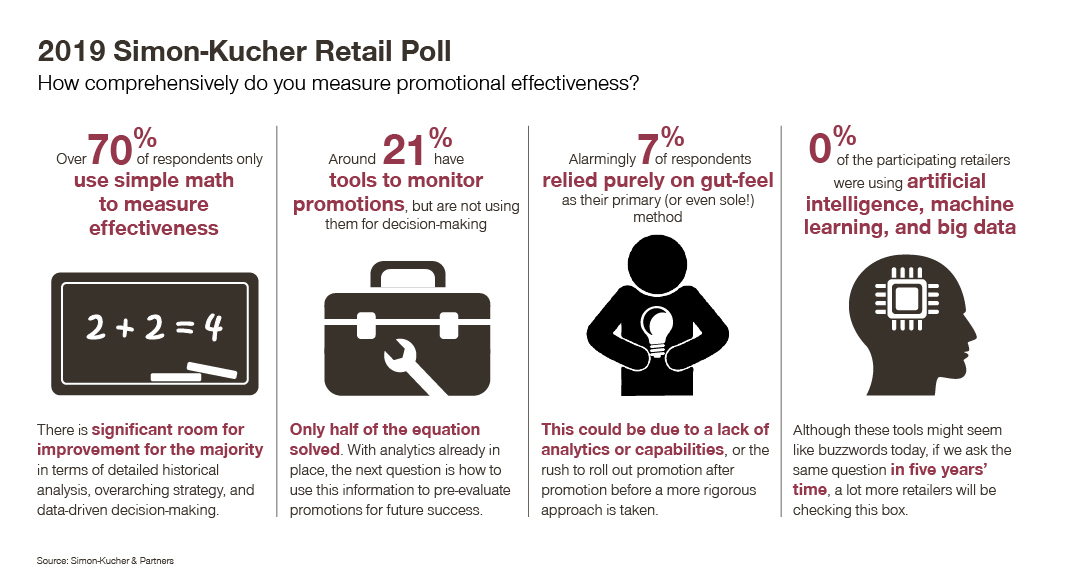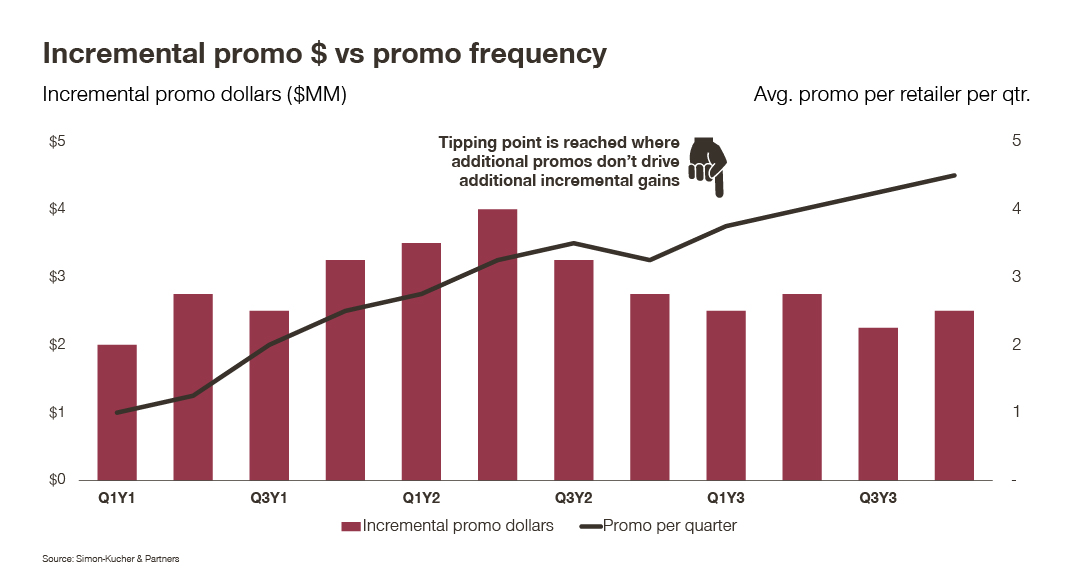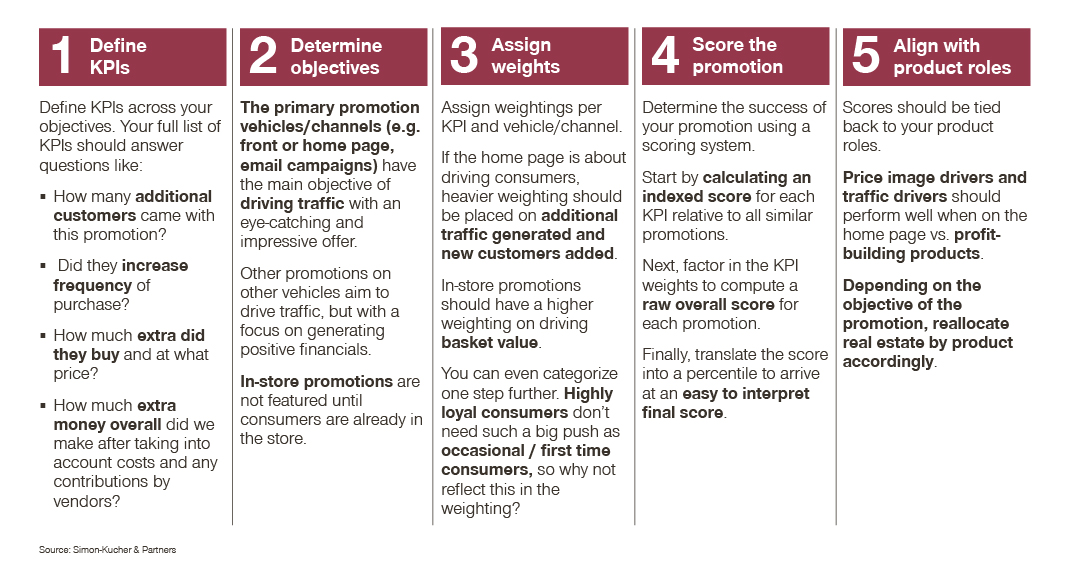In this four-part series, Shikha Jain uses the acronym SPAM to describe the four clear steps within a best-in-class promotional framework. Previous articles took a detailed look at Strategize, Plan, and Apply. In this final piece, Jain discusses how to Monitor promotional effectiveness for future decision-making.
Promotions are everywhere and it can be hard for retailers to escape them. In fact, those companies that do not run promotions are outliers. Although promotions have traditionally been limited to specific seasons and holidays, today’s consumers have come to rely on them, and many will delay a purchase in the endless search for the best deal.
But more does not necessarily mean better. This increase in promotional activities has created a challenging retail environment, and there is strong desire to improve how the success of promotions is measured. Simon-Kucher recently checked in with retailers to see how comprehensive their current analytics are when measuring promotional ROI. Our poll revealed an urgent need for action:

So what does it look like when promotional monitoring is done right?
This article will look at how to analyze historical promotions using case studies and frameworks, adjust strategy based on data-driven insights, and ensure promotional strategy is tied in with brand image. The right approach can be more pragmatic or more comprehensive, depending on your company’s individual needs:
Pragmatic monitoring approach
The first approach that is most commonly used involves measuring the incremental promotion dollars against a baseline and determining how many promotions you ran in that period. You can then evaluate whether increased campaign frequency improves incrementality – a very straightforward and pragmatic approach for when you run few promotions or lack robust analytics. Here’s an example:

What’s the takeaway from this example? The analysis reveals that an increased campaign frequency does not increase the dollars spent by “deal loyal” consumers. Instead, the target segment’s fixed spend is being diluted over the multiple promotional events. The retailer can safely reduce frequency by up to 40%, with minimal risk to share of dollars spent or the consumer’s overall spend.
This simple analysis approach works when promotions do not necessarily stack and you have a clean enough ability to determine a baseline where there are no promotions.
Comprehensive approach to analytics
In an ideal world, our comprehensive approach involves seven key steps.

Immediate benefits of the comprehensive approach
Drop unsuccessful promotions
The immediate benefit of conducting the analysis using this approach is you quickly identify negative gross margins where you need to stop the bleeding. Are any of your products on promotion sold at a per unit loss? Are they driving incrementality in other parts of your assortment? If they don’t, no matter how much volume you stand to sell you will never compensate for it. It’s a no brainer: stop these promotions immediately.
Pre-evaluate future promotions
In addition to looking back at historical promotions, this approach can pre-evaluate future promotions, assess eligibility if you develop KPI guardrails and have them in place, and predict the financial impact. Strategically, once you have the analytics and insights and overarching principles, you can identify broad trends across categories. These can be applied tactically for completely new promotions in the form of decision support tools and documents.
Develop your promotional toolkit today
Promotions are a great tool for driving revenue, but they require the right preparation, targets, and tools. Strategize, Plan, Apply, and Monitor (SPAM) is a vision that all retailers can pursue to develop their own promotional toolkit and ensure a high quality (not just quantity) of campaigns. SPAM includes but is not limited to:
- Finding the right events and types of promotions for the right segments
- Developing a best-in-class product role strategy
- Differentiating promotions by channel
- Carrying out codified analytics and pre-evaluating future promotions
Hopefully, with this Promotional Excellence series, I’ve removed the negative connotations from “SPAM” and have turned it into a set of positive guidelines that retailers can apply along their promotional journey.
Shikha Jain is Senior Director at Simon-Kucher & Partners
